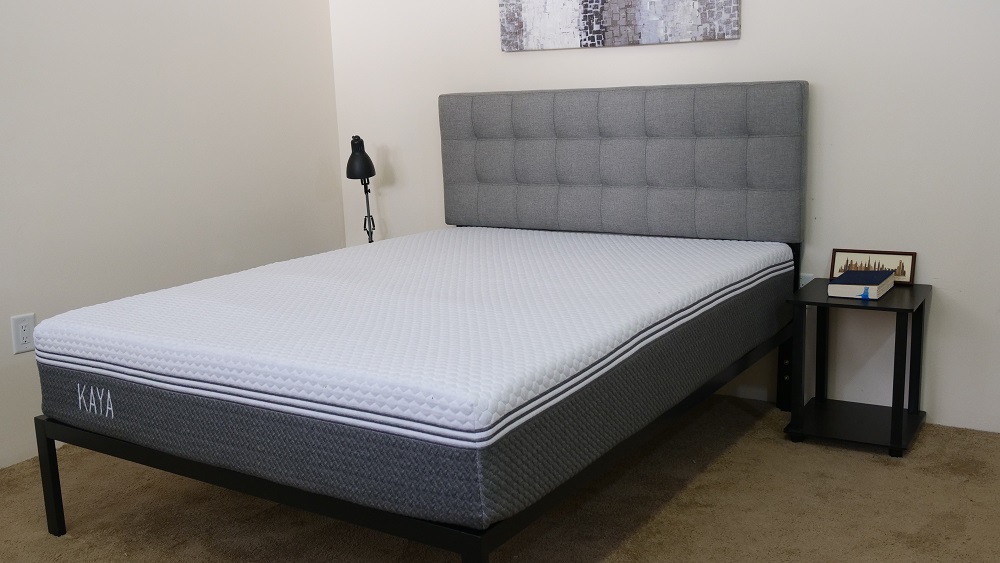Editor’s Note: The Kaya mattress is no longer available, but I recommend taking a look at the Puffy Lux Hybrid, which has a similar blend of cuddly comfort and support.
On a mission to provide its customers with total transparency into how its products are made, Kaya has become a unique and popular figure in the bed-in-a-box world. Its flagship mattress is a hybrid model built with five distinct layers of both foam and encased coil technology, which come together to produce an all-encompassing sleeping experience.
Today, I’ll be training my magnifying glass on the Kaya hybrid, putting it through a series of rigorous tests to see how comfortable it actually is and to figure out if it could be the right mattress for you!
Continue reading below for my full review of the Kaya mattress. Don’t have time to read it all? Click here to skip to the bottom and check out my review summary.

Thick top layers of gentle foam make the Kaya mattress especially well-suited for side sleepers.
CONSTRUCTION
As I mentioned up top, the Kaya is constructed with five layers of foam and enhanced pocketed coils, stacking up to 11” of comfort. The five-layer hybrid design is intended to draw on the best aspects of its diverse materials for a sleep that’s as pressure-relieving as it is supportive.
To see how the Kaya manages that, let’s dive into these layers and check out how they interact with one another. I should note that as part of its transparency goals, the Kaya sources 100% of its foam and over 90% of its steel coils from the United States.
Cover – The cover is made from a thick knit blend, lending the bed a warm, cozy feel. This material is also infused with Kaya’s proprietary ThermoGel, which provides surface cooling to the sleeper.
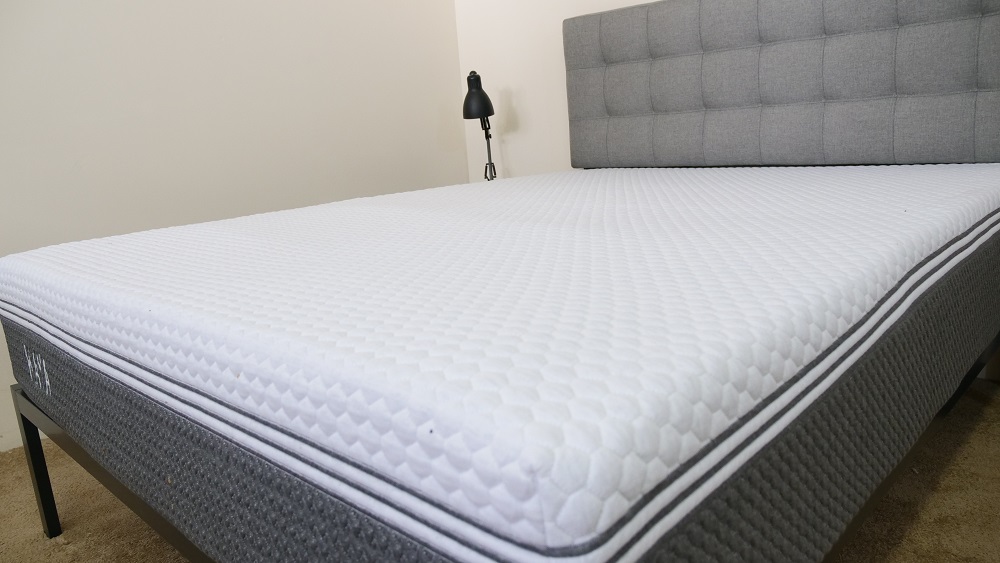
Comfort Layer – The comfort layer is constructed of 1” of super dense polyfoam. It’s got an interesting feel to it, because it evokes the body contouring of memory foam, but also has a quick response to pressure. This means you’ll get some immediate relief, but won’t feel like you’re stuck in the bed.
Contour Layer – The body contouring of the comfort layer extends into the 2” of memory foam found in this section. The material allows you to really sink into the mattress and experience the snug hug often associated with memory foam. I should point out that this layer is where the optimum pressure relief of the mattress is going to come from.
Transition Layer – Below the contour layer, you’ll find another inch of high-density polyfoam. This section is meant to connect the soft foam top layers with the pocketed coil system below.
Support Layer – The support layer of the Kaya hybrid is composed of 6” of pocketed coils. This section imbues the bed with excellent bounce and support. That they’re individually wrapped also means they’ll be able to both isolate motion super well and encourage healthy air flow throughout the structure.
Foundation Layer – The base of the bed is built with 1” of high-density polyfoam, which helps to support the pocketed coils and provide some stability to the mattress.
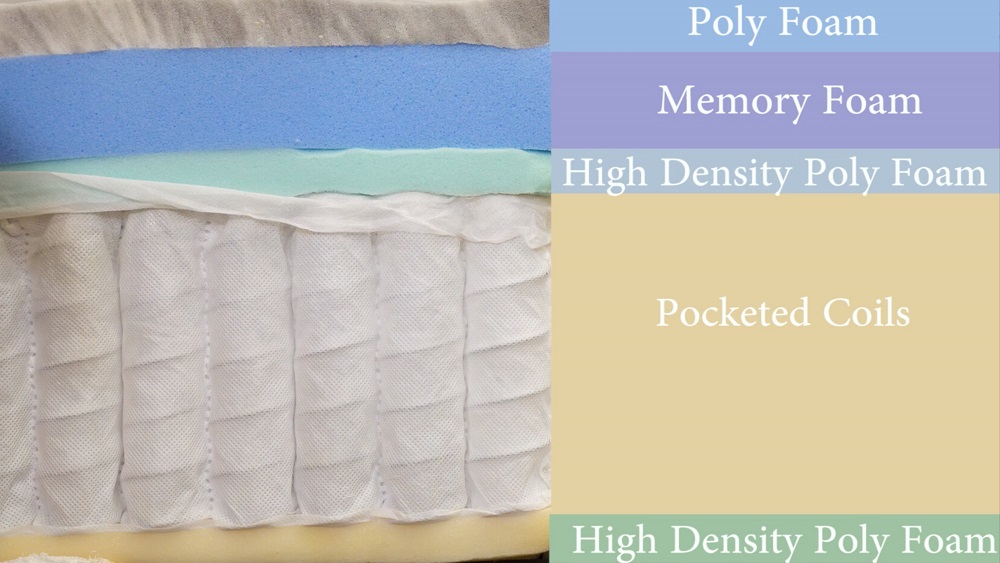
FIRMNESS

Thick top layers of gentle foam make the Kaya mattress especially well-suited for side sleepers.
After taking a look at the construction of the Kaya, let’s chat about the firmness and feel. I started off by applying light hand pressure to the mattress and straightaway noticed just how soft the top foam layers are. My hand sunk into these sections and was cushioned by the memory foam contouring layer. Pressing in further, I encountered the buoyant support of the pocketed coil system, which helped to lift me up and out of the bed.
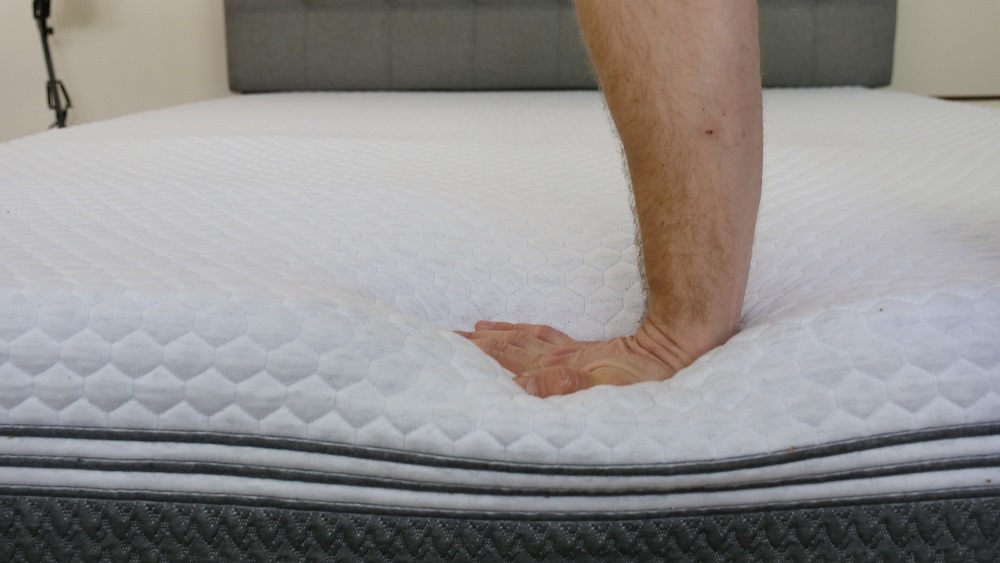
At this point I’d like to note that people of different body types and shapes will feel firmness differently. Rather than giving just my opinion on the overall firmness level of the Kaya, I enlisted three other people to give their opinion as well. This will give you a better sense of the firmness range you can expect from the mattress.
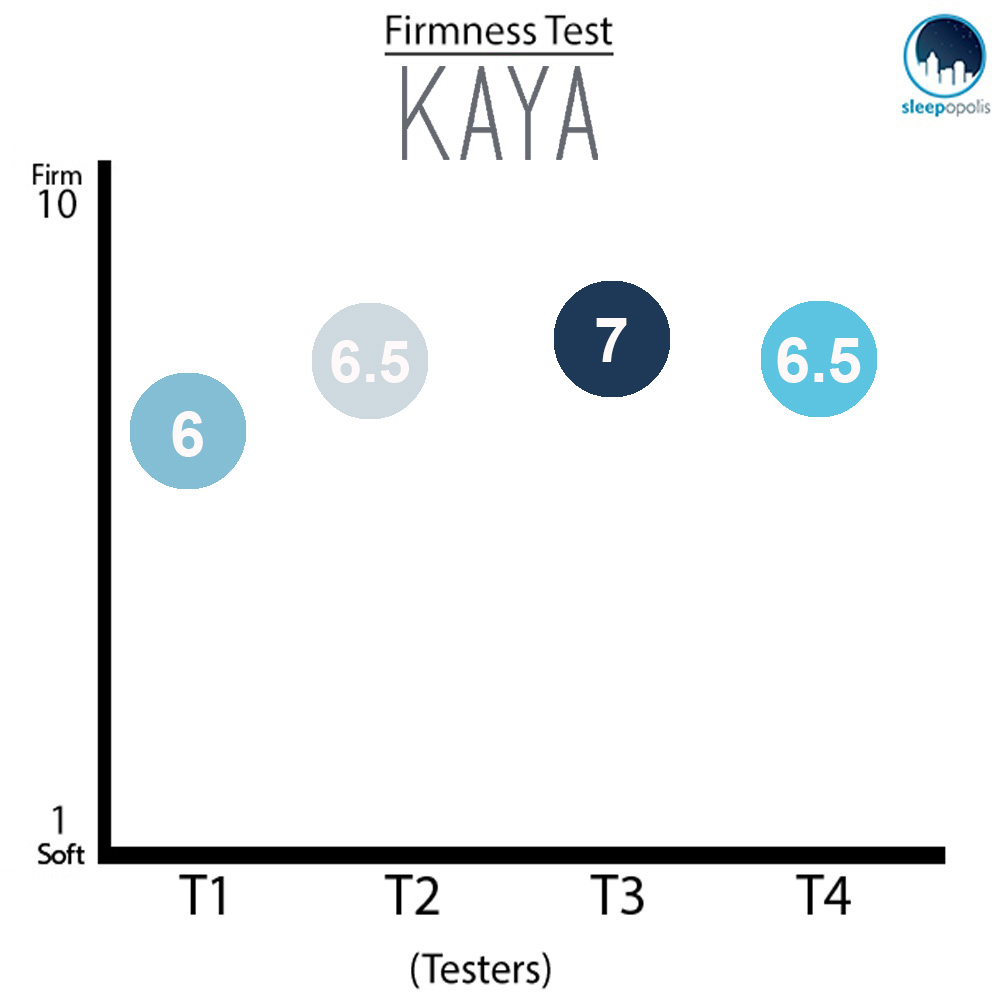
As you can see in the graph above, my testers were pretty much in agreement about the firmness of the mattress, giving it an average rating of 6.5. This is in exact alignment with the industry standard for medium firmness, which means this is a fairly firm bed.
I personally gave the Kaya a 6, experiencing it as a touch softer than medium firm. My rating was influenced mostly by the soft foam top layers, which do a wonderful job of gently contouring to the body. While this may not be ideal for back and stomach sleepers—who benefit from a firmer feel—it’s great for side sleepers who will find a lot to love in the immediate pressure relief up top.
I should add that in spite of this softer feel, the pocketed coils do a great job of supporting the sleeper so they don’t feel like they’re ever stuck in the mattress.
PRESSURE MAP
Rather than just describing the feel of the Kaya to you, I wanted to give a visual representation of where someone may feel pressure points form while lying on it. To do this, I placed a pressure map on top of the mattress and lied on my back, side, and stomach. You can see the results on the image below where pressure is represented from blue (low pressure) to red (high pressure).
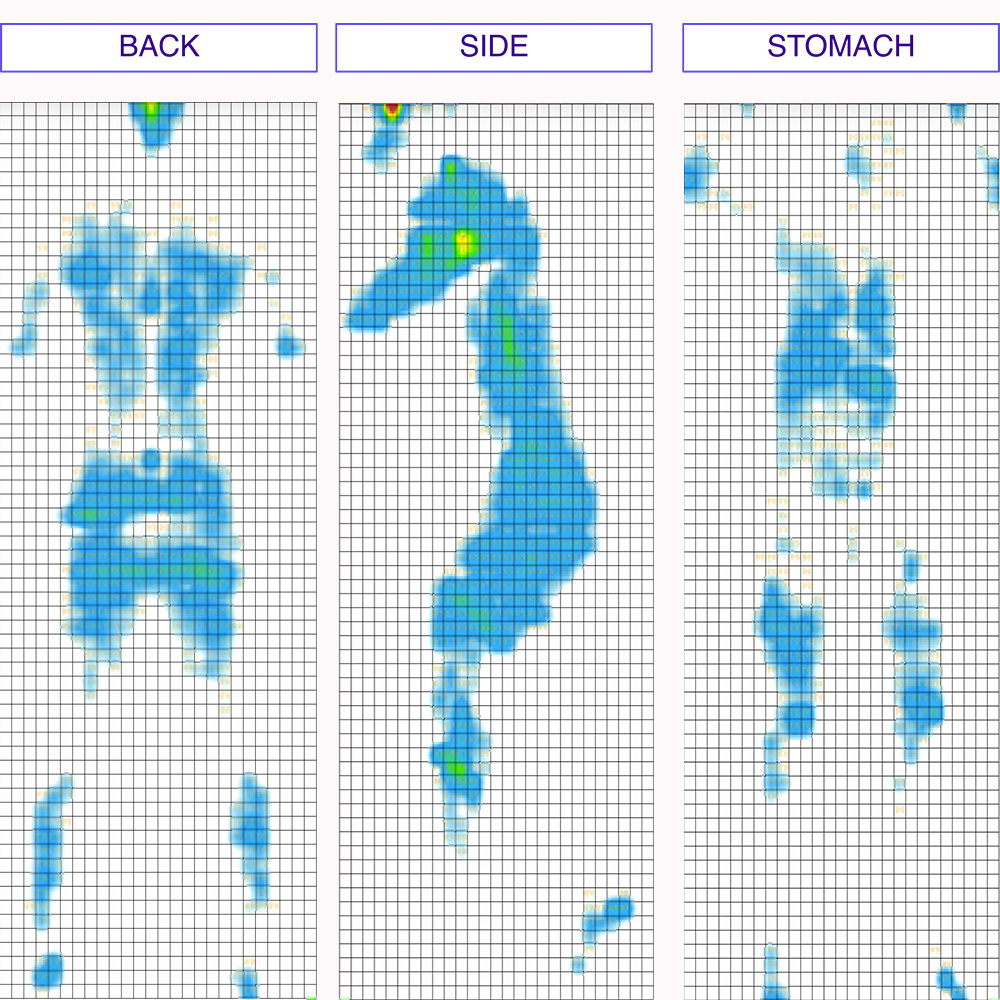
Back – Lying on my back, I felt as though my weight was pretty evenly distributed. That being said, I was definitely sinking into the mattress and readily felt the body contouring of the memory foam. This created nice pressure relief, and I didn’t feel too stuck when changing positions.
Side – Side sleepers need to watch out for tension at the shoulders and hips and, as you can see in the graphic, the Kaya did a good job of alleviating pressure at those points. The top foam layers are well-suited for side sleepers as they gently support the sleeper.
Stomach – Switching over to my stomach, I could feel my hips beginning to sink into the mattress a bit. While this was a little uncomfortable for me, lighter sleepers may not experience too much issue with this and may find the pocketed coils supportive enough for satisfying stomach sleeping.
Hip and shoulder pain? Check out my top picks for side sleepers.

Thick top layers of gentle foam make the Kaya mattress especially well-suited for side sleepers.
MOTION TRANSFER
If you plan on sharing your bed with a partner, you’ll want to know what it’ll feel like when the other person crawls out of bed in the morning or tosses around at night. This next test is intended to demonstrate the intensity of motion that is detectable from one side of the mattress to the other.
To illustrate this motion transfer, I dropped a 10 lb. steel ball from heights of 4 inches, 8 inches and 12 inches and measured the disturbance it caused: the bigger the lines, the bigger the disturbance.
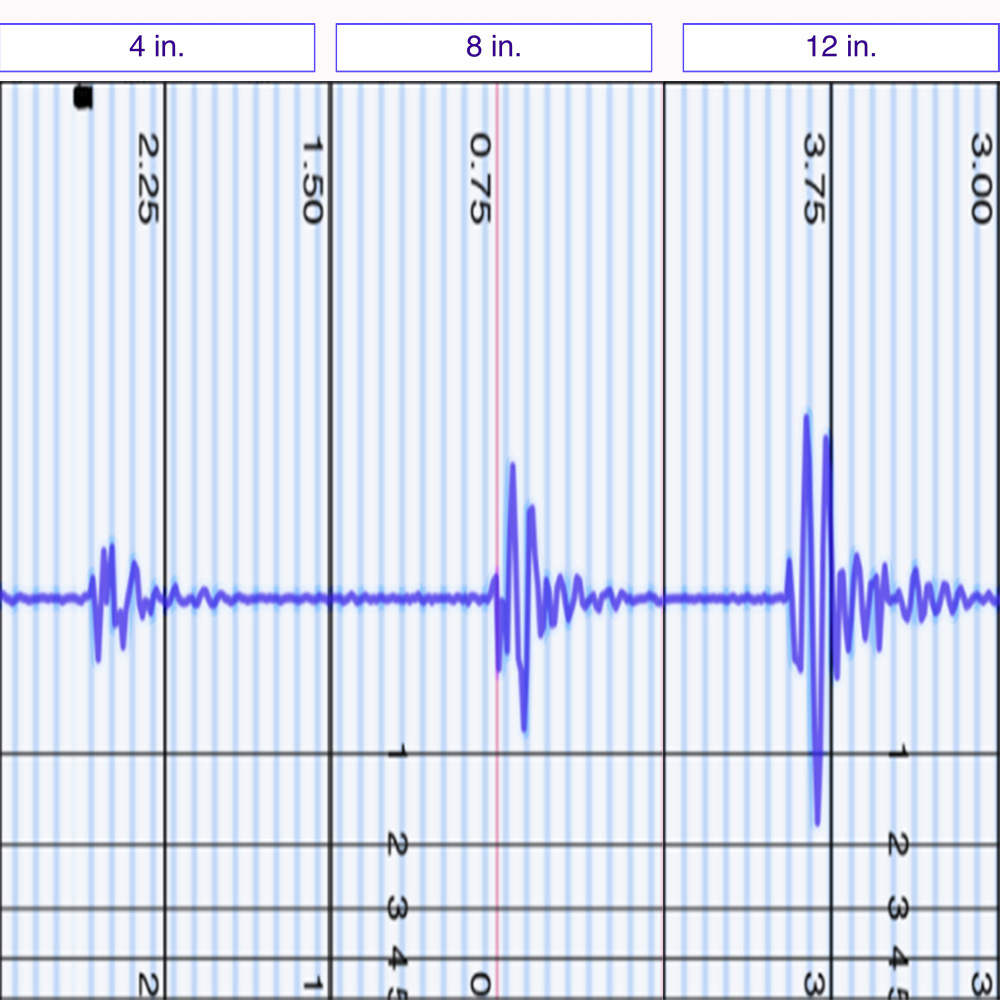
As you can clearly see in the graphic above, these are incredible motion transfer results. Not only do the soft foam top layers dampen any surface disturbance that may be caused by a quick toss and turn in the night, the interior pocketed coil support system helps to isolate this motion even more and dissipate it throughout the structure. Given the strength of these results, I’d say the Kaya would make an excellent bed for couples, especially for those who sleep in different positions.
SINKAGE TEST
When buying a new bed, most people want to know whether they’ll feel like they’re sinking “into” the mattress or laying “on top” of it. To visualize this sinkage, I placed four balls of varying sizes and densities (a 6 lb medicine ball, a 10 lb steel ball, a 50 lb medicine ball, and a 100 lb medicine ball) on the mattress and measured how much they compressed the surface.
The variations in size, weight and density are meant to simulate different body parts and different sized sleepers.
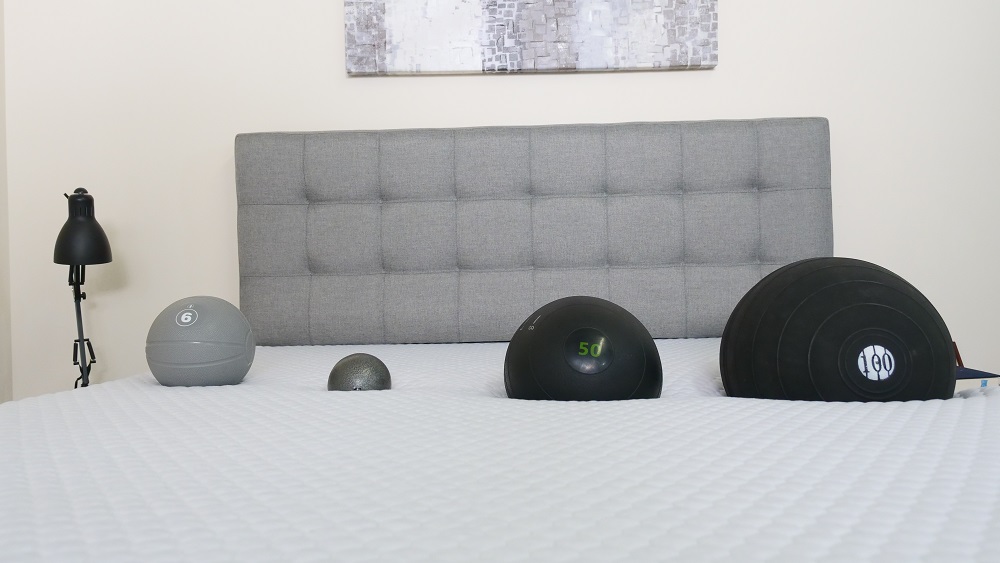
- 6 lb medicine ball: 1.5 inches of sinkage.
- 10 lb steel ball: 2 inches of sinkage.
- 50 lb medicine ball: 4.5 inches of sinkage.
- 100 lb medicine ball: 6 inches of sinkage.
While the lighter balls demonstrated a bit more sinkage than I was expecting, these results as a whole are pretty average for a mattress built with as much foam as the Kaya is. You can see how the different weights interact with the soft foam top layers, but how they’re also supported by the pocketed coil system, which helps to buoy them on top of the bed. I would add that you’ll probably experience more sinkage from the Kaya than other beds on the market, but it’s nothing that’ll make you feel too stuck.
EDGE SUPPORT
If you’re going to share your bed with a partner and need to use the entire surface area of the mattress, it’s going to be crucial for you to consider the amount of edge support it’ll provide.
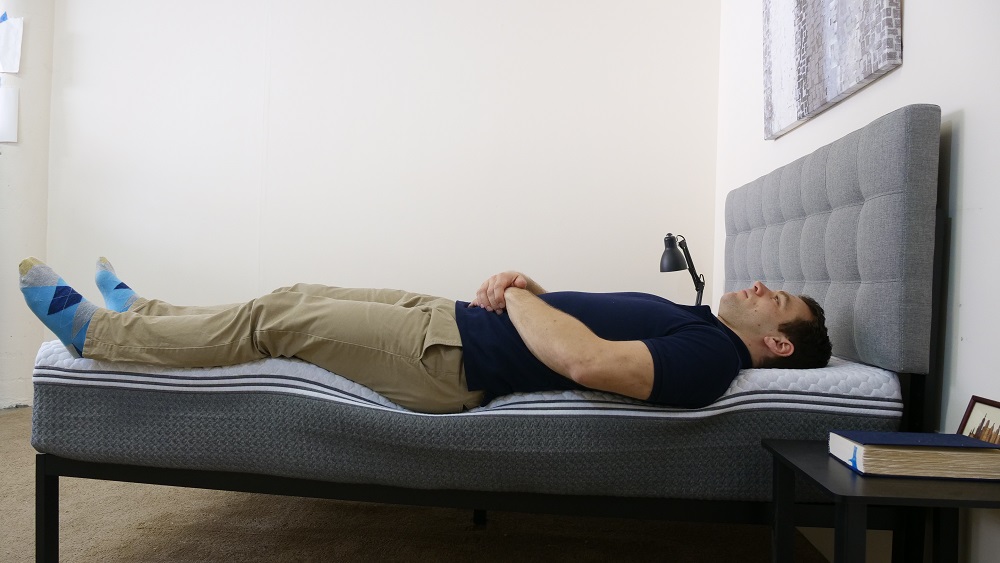
Lying on my back near the edge of the bed, I felt as supported as I did in the center. Scooting closer to the side, I did notice some compression through the top foam layers, but the bottom support sections kept me feeling secure. As you can see in the photo, I experienced a lot of great body contouring in this position, which helped to fill in the spaces at my lower back and provide some immediate pressure relief.
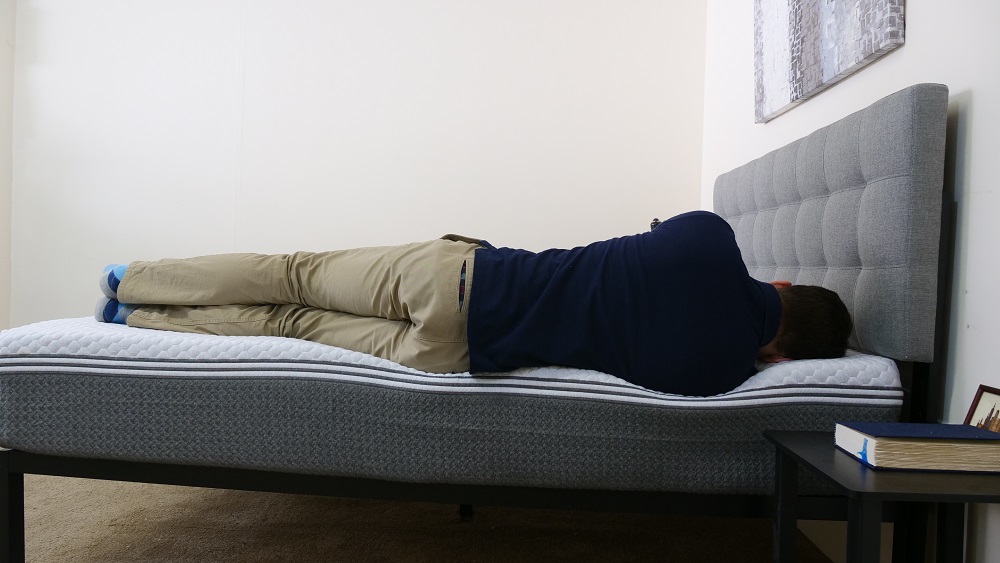
I detected this same compression when I rolled over onto my side. The foam top layers caved a bit under my weight, but the pocketed coil system again helped me to feel supported at the edge. As you’ll notice in the image, the comfort and contour layers did an excellent job of cradling my shoulders and hips. I should add that this sinkage was mitigated by the interior supportive pocketed coil system, which you can clearly see in the defined dips and valleys along my body.
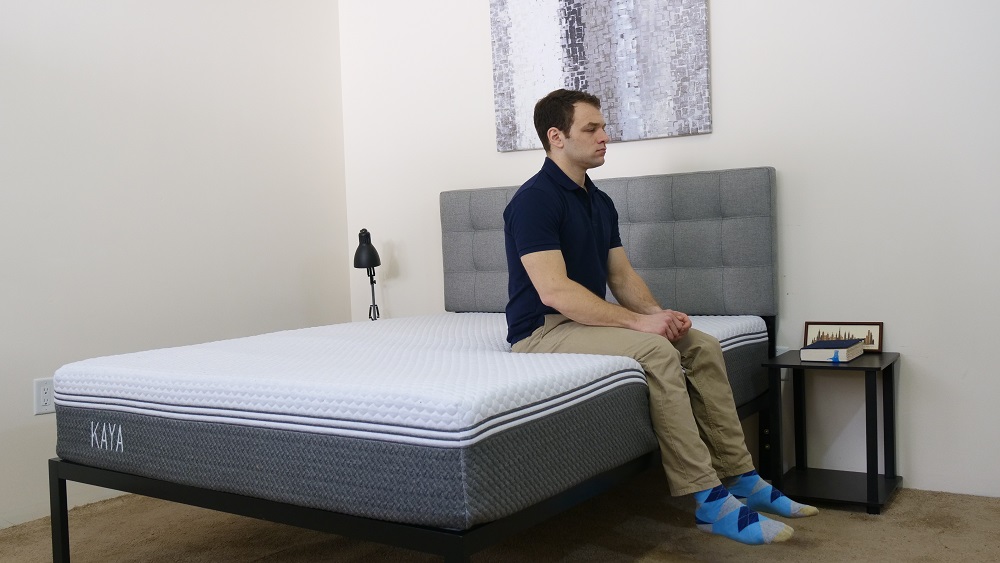
In this position, I wanted to simulate what it would feel like to be sitting on the bed in the morning when you’re lacing up your shoes and getting ready for the day. A lot of foam mattresses experience severe compression in this position, but the Kaya actually held up fairly well.
BASIC INFORMATION
- Sleep Trial: 120 days.
- Warranty: 20 years.
- Shipping: Free, arrives compressed in a box.
Just getting started? Begin your mattress search with my mattress reviews breakdown.
SIZE AND PRICING INFORMATION
If you’re convinced the Kaya is the right mattress for you, the size and pricing information for the mattress are below. Please note that these prices reflect standard pricing.
| Size | Dimensions | Price |
|---|---|---|
| Twin | 38” x 75” x 11” | $795 |
| Twin XL | 38” x 80” x 11” | $845 |
| Full | 53” x 75” x 11” | $995 |
| Queen | 60” x 80” x 11″ | $1,195 |
| King | 76” x 80” x 11” | $1,345 |
| California King | 72” x 84” x 10” | $1,345 |
IS THE KAYA MATTRESS RIGHT FOR YOU?

Thick top layers of gentle foam make the Kaya mattress especially well-suited for side sleepers.
Now that we’ve taken a closer look at the Kaya mattress, it’s time to discuss who it’d be a good fit for.
- Side Sleepers – The Kaya would make an awesome bed for side sleepers. The pressure-relieving foam top layers combined with the supportive pocketed coil system make for a sleeping experience that alleviates tension at the shoulders and hips without leaving the sleeper feeling too stuck.
- Couples – As we discussed above, this mattress is pretty amazing at containing motion, so would make a great bed for couples who need to be able to doze while their partner tosses and turns at night.
- Long Term Mattress – Not only is the 20 year warranty really strong for the bed-in-a-box market, but the materials used in this bed—namely the high-density polyfoam and pocketed coils—make it an incredibly durable product.
For more information on the Kaya, check it out here!
